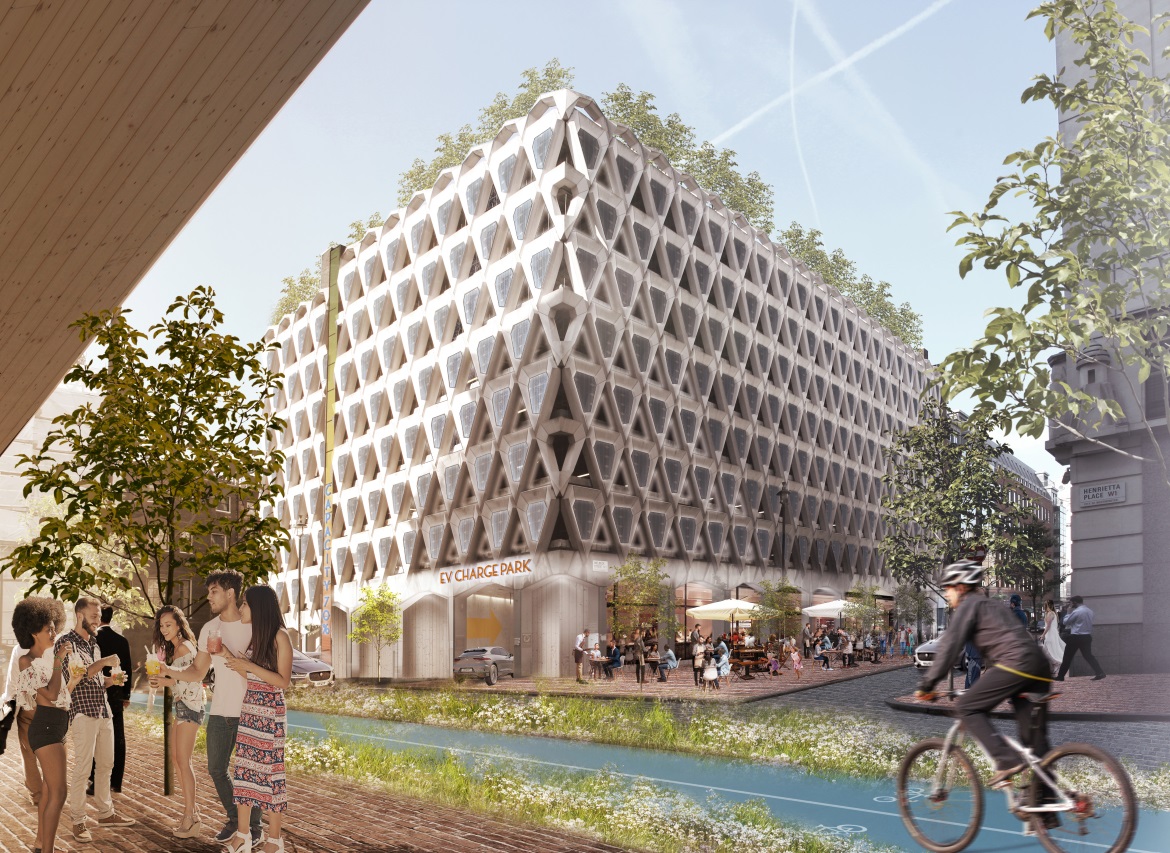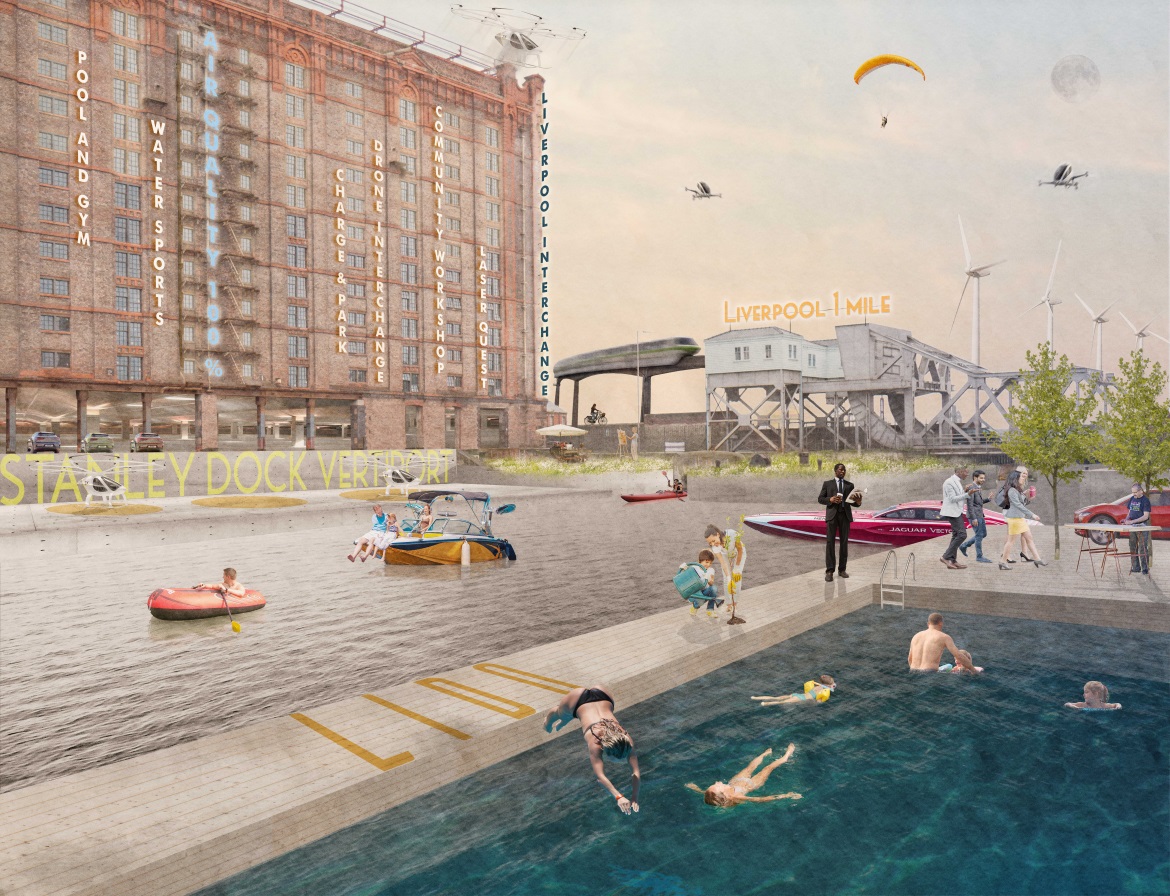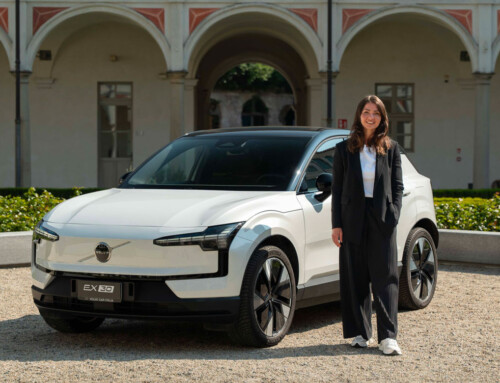The “Electrified Automotive Future and its Relationship to Architecture” was the subject of an evening hosted by Jaguar design and a group of London’s leading Riba architects, planners, property developers and infrastructure experts last week. The Royal Institute of British Architects (RIBA), of which Ian Callum is an Honorary Fellow, is the professional body for architects in the UK with more than 40,000 members around the world. “I am incredibly proud of what we have created in the Jaguar I-Pace and the reception it has received since its launch. It is a truly revolutionary vehicle with one of the most advanced zero-emissions powertrains ever fitted to a production car”, said Ian Callum, Jaguar Design Director. Ian Callum and a number of architects led by award-winning Jon Eaglesham of Barr Gazetas presented concepts depicting a joint-vision as to what an urban future of automotive electrification could look like.
The future’s service station
In this example we take a traditional, tired motorway service station and breathe new electrified life in to it. It is based on Forton Services on the M6. When it opened in 1965 Forton Services was a beacon of modernity featuring an up-market restaurant and a sun deck. Today motorway services are often an unpleasant jumble of commercial buildings servicing noisy, polluted motorways. With electrification, much reduced noise and pollution together with increased ‘dwell time’, result in such stations becoming destinations with an array of amenities and services including farm shops, gymnasiums, swimming pools and restaurants to give travellers greater options to occupy the time required to charge their vehicles.
Multi-Storey car park of the future
This is based on one of the UK’s most iconic multi-storey car parks – on Welbeck Street, hidden behind Oxford Street in London’s West End. Completed in 1970, and originally constructed to provide car parking space for shoppers, the structure symbolises an era of fossil fuel consumption. Re-imagined as a self-sufficient charging plaza, the proposal is to reinvent the existing stock of city centre multi-storey car parks, where owners of electric vehicles who are less likely to have access to off-street parking at their homes, can charge their cars adjacent to good public transport links. The proposal at Welbeck Street makes use of the existing structural grid to support solar photovoltaics panels that will provide clean energy for inner-city electric vehicle owners to charge their cars. The result is cleaner and greener surroundings and parts of the building freed up for retail and leisure use. A public artwork on the side of the building indicates the renewable energy generated to charge the cars within the structure.
Electric City – fast-approaching reality of completely emission free major cities
Reimagining post-industrial wastelands. Here we have taken Liverpool’s Stanley Dock as an example. Built in 1901 it was once the largest building in the world, but fell into disrepair in the 1980s, symbolising lost industry and economic difficulty. In this image it has been reimagined as a community interchange, helping to rejuvenate the city through the creation of new community facilities and industries based on green energy on redundant sites country wide. Linked to the future of transport and car-free city centres, redundant brownfield sites like Stanley Dock can offer the multi-modal ‘last mile’ connection to cities, whilst rejuvenating the communities they are situated in.
Electric future – opportunity for wholesale change, up and down the country
In this image, London is a cleaner, healthier city where repurposed, new infrastructure, connected to electric vehicles, has allowed a proliferation of vegetation and green space. Cities across the UK are electrically self-sufficient harnessing solar and tidal power to power the increased number of electric vehicles, both land-based and airborne.














